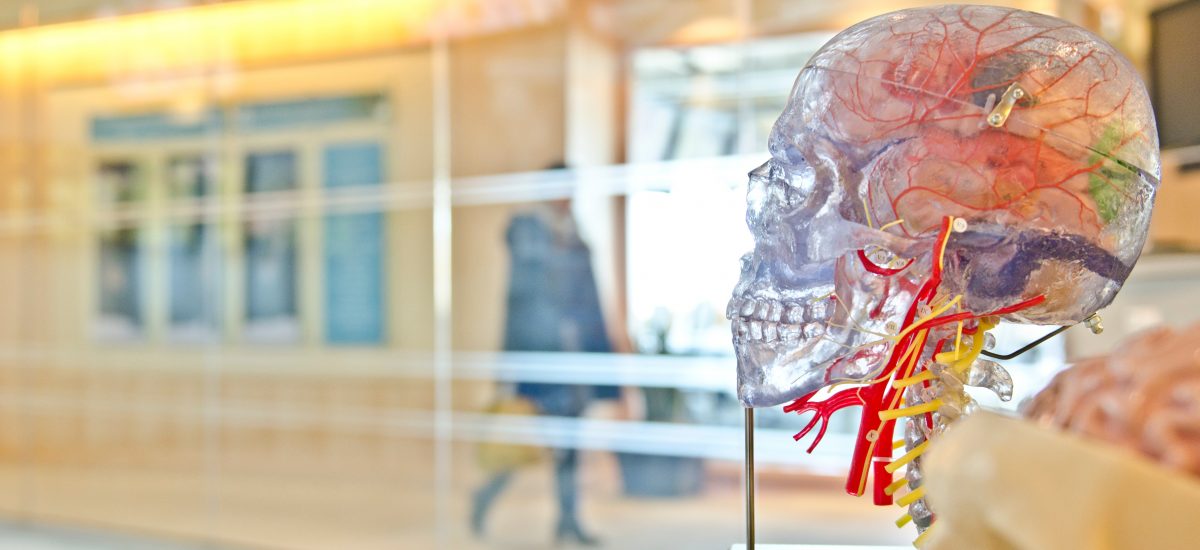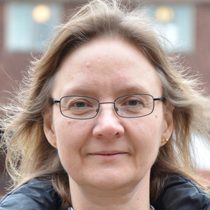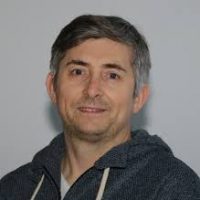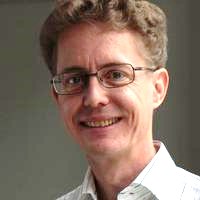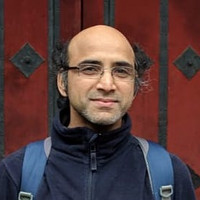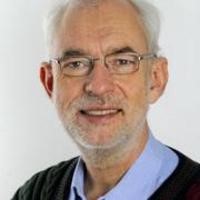About the project
Objective
The main goal of the dBrain collaborative project is to develop an interdisciplinary approach to improve early diagnosis and prognosis for brain diseases and to facilitate the development of therapies by combining computational modelling of the brain and advanced artificial intelligence (AI) based data analyses.
The computational approaches will initially focus on Parkinson’s (PD) and Alzheimer’s diseases (AD), the two most common neurodegenerative diseases. These disease cases are strategically selected in collaboration with the Karolinska Hospital (KS) and Karolinska Institute (KI).
This research is important because the incidence of brain diseases will only increase with increasing human longevity. It is estimated that by 2030, mental disorders will be the largest contributor to the total disease burden.
Background
With increased longevity, the number of patients with brain-related diseases will grow. In 2030, mental illness is estimated to be the main imposition on health care. New advances in data analysis and computational modelling of the brain can use the potential of patient data to prevent and treat brain diseases.
Cross-disciplinary collaboration
The research team represents the School of Electrical Engineering and Computer Science (EECS), the School of Engineering Sciences in Chemistry, Biotechnology and Health (CBH) and the School of Engineering Sciences (SCI).
Watch the recorded presentation at the Digitalize in Stockholm 2023 event:
Activities & Results
Find out what’s going on!
Activities, awards, and other outputs
- Organized with our collaborations at KI/KS a session during the SPIE conference 2021, presented the dBrain work there and participated in a panel discussion on AI in neurosciences (see https://doi.org/10.1117/12.2606005)
- Organized the BrainNet workshop 2022 and presented our progress in the dBrain consortium (https://www.digitalfutures.kth.se/event/brainnet-workshop/)
- Master thesis student Georgios Moschovis participated in the Image CLEF 2022 challenge and obtained 4th place in the concept detection challenge and 5th place in the caption prediction task.
- SPIE 2021 presentation: Synaptic heterogeneity in the brain at single synapse resolution.
- Presentation at KTH ML-day workshop 220117, “Machine learning-based unsupervised feature extraction from magnetoencephalography and eye-tracking data”.
- Participation in the KTH ML-day and chairing one of the sessions.
- In particular one of the software used and further developed in dBrain in WP1 is called Snudda, a software for setting up detailed microcircuit models. Snudda has been developed further to also be able to support the building of diseased neuronal networks. Snudda has been adopted by EBRAINS, and the use of Snudda to model the healthy and disease brain have been disseminated at various events listed below:
- BCBT 2021 summer school: “How can one build and simulate basal ganglia microcircuits in a data-driven, bottom-up manner”
- SPIE 2021: “Creating a microcircuit of the striatum using connectivity, morphological and electrophysiological data”
- INCF workshop 2021: “Snudda: Open source tool for creating micro-circuits in silico” and “Dealing with neuron morphologies”
- Baltic Neuroscience Summer School – September 2021
- Codejam – November 2021: “Build NEURON microcircuits using touch detection with Snudda”
- SWEBAGS conference – December 2021: “From Morphology to Microcircuity using Snudda”
- BrainNet workshop KTH, May 2022: “Exploring striatum in health and disease using data-driven models”
- FENS – July 2022 – Two posters using Snudda
Results
dBrain addresses two major challenges in our understanding of the brain in health and disease: a) what is the relationship between the structural connectivity and functional interactions between different brain regions and within local neuronal networks?; and b) how do disease-related slow changes in the chemical balance, gene expression and neuronal degeneration shape the brain activity dynamics? We address these challenges via four work packages (WPs), using digital approaches comprising AI-based data analysis, math, computational modelling and simulations.
With the help of Digital Futures, we created a vibrant environment involving three KTH schools and collaborators at KS and KI. In addition to regular weekly meetings at the Digital Futures for the whole consortium (i.e. PIs, the recruited postdocs, and other students), several subgroups also meet more frequently in one of the labs or via zoom. Also, several Master’s Student projects have been completed in addition to the work of PhD students and postdocs. In the weekly meetings, postdocs have particular roles – regularly presenting updates on their work and journal articles selected for general interest. These activities provide the postdocs with training in presenting their work and leading discussions. The postdocs also have arranged team-building activities.
Publications
We like to inspire and share interesting knowledge!
Publications
- Sanna Persson, Rodrigo Moreno, Bounding tractogram redundancy, Frontiers in Neuroscience. 18:1403804, 2024, https://doi.org/10.3389/fnins.2024.1403804
- Malin Siegbahn, Daniel Jörgens, Filip Asp, Malou Hultcrantz, Rodrigo Moreno, Cecilia Engmér Berglin. Asymmetry in cortical thickness of the Heschl’s gyrus in unilateral ear canal atresia. Otology & Neurotology. 45(4),e342-e350, 2024. https://doi.org/10.1097/MAO.0000000000004137
- Caroline Dartora, Anna Marseglia, Gustav Mårtensson, Gull Rukh, Junhua Dang, J- Sebastian Muehlboeck, Lars-Olof Wahlund, Rodrigo Moreno, José Barroso, Daniel Ferreira, Helgi Schiöth, Eric Westman. A deep learning model for brain age prediction using minimally preprocessed T1w-images as input. Frontiers in Aging Neuroscience 15, 1303036, 2024. https://doi.org/10.3389/fnagi.2023.1303036
- Antonia Hain, Daniel Jörgens, Rodrigo Moreno. Randomized iterative spherical-deconvolution informed tractogram filtering. Neuroimage 278, 120248, 2023. https://doi.org/10.1016/j.neuroimage.2023.120248
- Jingru Fu, Antonios Tzortzakakis, José Barroso, Eric Westman, Daniel Ferreira, Rodrigo Moreno. Fast three-dimensional image generation for healthy brain aging using diffeomorphic registration. Human Brain Mapping 44 (4), 1289-1308, 2023. https://doi.org/10.1002/hbm.26165
- Kajsa Ahlgren, Christoffer Olsson, Inna Ermilova, Jan Swenson. New insights into the protein stabilizing effects of trehalose by comparing with sucrose. Physical Chemistry Chemical Physics 25 (32), 21215-21226, 2023. https://doi.org/10.1039/D3CP02639F
- Zhou Zhou, Chirstoffer Olsson, T Christian Gasser, Xiaogai Li, Svein Kleiven. The White Matter Fiber Tract Deforms Most in the Perpendicular Direction During In Vivo Volunteer Impacts. J Neurotrauma. 2024 41(23-24):2554-2570, 2024. https://doi.org/10.1089/neu.2024.0183
- Jingru Fu, Daniel Ferreira, Örjan Smedby, Rodrigo Moreno. A deformation-based morphometry framework for disentangling Alzheimer’s disease from normal aging using learned normal aging templates. arXiv.2311.08176, 2023. https://doi.org/10.48550/arXiv.2311.08176
- Daniel Jörgens, Pierre Marc Jodoin, Maxime Descoteaux, Rodrigo Moreno. Merging multiple input descriptors and supervisors in a deep neural network for tractogram filtering. arXiv:2307.05786, 2023. https://doi.org/10.48550/arXiv.2307.05786
- Jingru Fu, Simone Bendazzoli, Örjan Smedby, Rodrigo Moreno. Unsupervised Domain Adaptation for Pediatric Brain Tumor Segmentation. MICCAI 2024 Workshop on Advancing Data Solutions in Medical Imaging AI (ADSMI’24) (in press). https://doi.org/10.48550/arXiv.2406.16848
- Sanna Persson, Xinyi Wan, and Rodrigo Moreno. Randomly COMMITting: Iterative Convex Optimization for Microstructure-Informed Tractography. MICCAI 2024 Workshop on Computational Diffusion MRI (CDMRI’24) (in press)
- Yu Zhou, Jingru Fu, Örjan Smedby, Rodrigo Moreno. Synthesis of Pediatric Brain Tumor Images with Mass Effect. SPIE – Medical Imaging: Image Processing 12464, 699-707, 2023. San Diego, USA, February 2023. https://doi.org/10.1117/12.2654366
- I Carannante, Y Johansson, G Silberberg, J Hellgren Kotaleski. Data-Driven Model of Postsynaptic Currents Mediated by NMDA or AMPA Receptors in Striatal Neurons. Front Comput Neurosci. 2022; 16: 806086.
- J Fu, A Tzortzakakis, J Barroso, E Westman, D Ferreira, R Moreno. Generative Aging of Brain Images with Diffeomorphic Registration. arXiv preprint. 2022; arXiv:2205.15607. https://doi.org/10.48550/arXiv.2205.15607
- A Hain, D Jörgens, R Moreno. Assessing Streamline Plausibility Through Randomized Iterative Spherical-Deconvolution Informed Tractogram Filtering. arXiv preprint 2022; arXiv:2205.04843. https://doi.org/10.48550/arXiv.2205.04843
- M Siegbahn, C Engmér Berglin, R Moreno. Automatic segmentation of the core of the acoustic radiation in humans. Front Neurol. 2022 : 934650. https://doi.org/10.3389/fneur.2022.934650
- C Dartora, A Marseglia, G Mårtensson, G Rukh, J Dang, JS Muehlboeck, LO Wahlund, R Moreno, J Barroso, D Ferreira, HB Schiöth, E Westman. Predicting the Age of the Brain with Minimally Processed T1-weighted MRI Data. medRxiv preprint. 2022; medRxiv:2022.09.06.22279594. https://doi.org/10.1101/2022.09.06.22279594
- Chakravarty K, Roy S, Sinha A, Nambu A, Chiken S, Hellgren Kotaleski J, Kumar A. Transient Response of Basal Ganglia Network in Healthy and Low-Dopamine State. eNeuro. 2022 Mar 18;9(2):ENEURO.0376-21.2022. doi: 10.1523/ENEURO.0376-21.2022.
- Hjorth, J.J.J., Hellgren Kotaleski, J. & Kozlov, A. Predicting Synaptic Connectivity for Large-Scale Microcircuit Simulations Using Snudda. Neuroinform 19, 685–701 (2021). https://doi.org/10.1007/s12021-021-09531-w
- G Colombo, R Cuber, L Kanari, A Venturino, R Schulz, M Scolamiero, J Agerberg, H Mathys, L Tsai, W Chachólski,, K Hess, S Siegert. Microglial morphOMICs, a tool for mapping microglial morphology, reveals brain-region-and sex-dependent phenotypes. Nature neuroscience, 2022.
- W Chachólski, A Guidolin, I Ren, M Scolamiero, F Tombari. Effective computation of relative homological invariants for functors over posets. arXiv preprint 2022; arXiv:2209.05923
- W Chachólski, A Jin, F Tombari. Realisations of posets and tameness. arXiv preprint 2022; arXiv:2112.12209
- W Chachólski, René Corbet, Anna-Laura Sattelberger. The Shift-Dimension of Multipersistence Modules. arXiv preprint 2022; arXiv:2112.06509.
- W Chachólski, B Gunti, C Landi, Decomposing filtered chain complexes: Geometry behind barcoding algorithms. Computational Geometry, Volume 109, 2023.
- Georgios Moschovis. NeuralDynamicsLab at ImageCLEF Medical 2022. ImageCLEF, 2022.
- Helson Pascal, Lundqvist Daniel, Svenningsson Per, Vinding Mikkel, Kumar Arvind (2023). Cortex-wide topography of 1/f-exponent in Parkinson’s disease. Nature Parkinson’s Disease, 9, Article number: 109.
- Zang, Jie, Liu Shenquan, Helson Pascal, Kumar Arvind (2024). Structural constraints on the emergence of oscillations in multi-population neural networks. eLIFE, 12(Feb 5).
- Wärnberg Emil, Kumar Arvind (2023). Feasibility of dopamine as a vector-valued feedback signal in the basal ganglia. PNAS 32(120):e2221994120
Master School Theses
- Yuqi Zheng. Predictive MR Image Generation for Alzheimer’s Disease and Normal Aging Using Diffeomorphic Registration. MS thesis KTH 2023. Supervisors Rodrigo Moreno, Jingru Fu. Diva diva2:1833589
- Xinyi Wan. Assessing the Streamline Plausibility Through Convex Optimization for Microstructure Informed Tractography(COMMIT) with Deep Learning. MS thesis KTH 2023. Supervisor Rodrigo Moreno. Diva diva2:1754277
- Teodor Pstrusiński. Impact of the autoencoder-based FINTA tractogram filtering method on brain networks in subjects with Mild Cognitive Impairment. MS thesis KTH 2023. Supervisors Rodrigo Moreno, Fabian Sinzinger. Diva diva2:1799683
- Erika Bengtsdotter. Towards Anatomically Plausible Streamline Tractography with Deep Reinforcement Learning. MS thesis KTH 2022. Supervisors Rodrigo Moreno, Fabian Sinzinger. Diva diva2:1695872
- Filippo Maschio. Influence of tractogram filtering in the analysis of tractography data in rat brains. MS thesis University of Padua, Italy 2022. Supervisor Rodrigo Moreno.
- Yu Zhou. Synthesis of Pediatric Brain Tumor Image With Mass Effect. MS thesis KTH 2022. Supervisors Rodrigo Moreno, Jingru Fu. Diva diva2:1686799
- Antonia Hain. Assessing individual streamline plausibility through randomized spherical deconvolution-informed tractogram filtering. MS thesis University of Saarland, Germany 2021. Supervisor Rodrigo Moreno.
- N Hulst, Exploring persistent homology as a method for capturing functional connectivity differences in Parkinson’s Disease. Master Thesis. DiVA, id: diva2:1687257.
- Marvin Köpff. Impact of tractogram filtering and graph creation for structural connectomics in subjects with mild cognitive impairment. MS thesis KTH 2020. Supervisors Rodrigo Moreno, Joana Pereira. Diva: diva2:1463915
- Johannes Wennberg. Longitudinal assessment of functional connectivity impairment in rat brains. MS thesis KTH 2019. Supervisor Rodrigo Moreno, diva2:1327919
- Cristina Zanin. Graph Convolutional Networks for static and dynamic functional connectivity: an application to the Autism Spectrum Disorder. MS thesis University of Padua, Italy 2020. Supervisor Rodrigo Moreno.
- Lucas Höglund. Analysis of Eye Tracking Data from Parkinson’s Patients using Machine Learning. MS thesis, KTH.
- Leo Bergman. Feature extraction with self-supervised learning on eye-tracking data from Parkinson’s patients and healthy individuals. MS thesis, KTH.
- Emma Lind. Analysis of Brain Signals from Patients with Parkinson’s Disease using Self-Supervised Learning. MS thesis, KTH.
- Wilhelm Ågren. Feature extraction from MEG data using self-supervised learning. MS thesis, KTH.
- Giulia Tuccio. Parameter estimation in a cardiovascular computational model using numerical optimization. MS thesis, KTH.
- Paolo Calderaro. Patient simulation. Generation of a machine learning “inverse” digital twin. MS thesis, KTH.

